Punahou Women at the Forefront of Social Progress
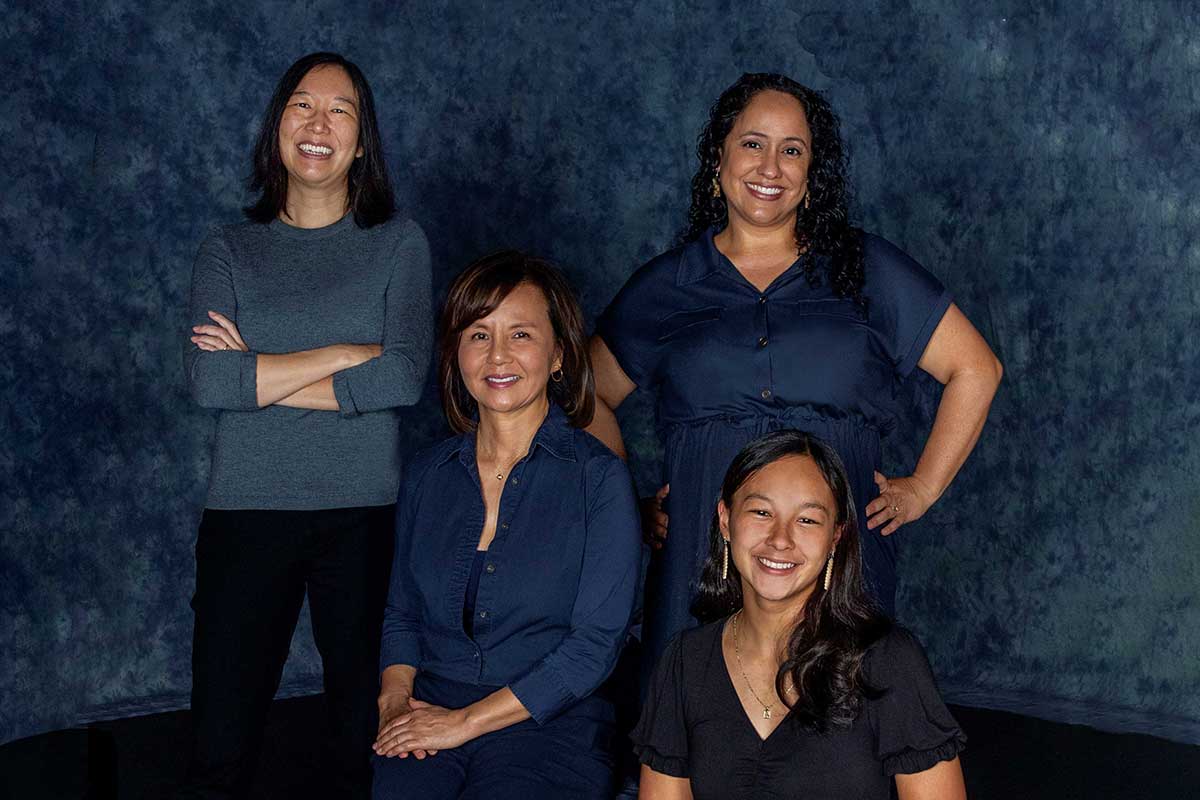
From rural Hawai‘i to outer space, these fearless Puns are opening doors and breaking down barriers so that others can thrive.
Michelle K. Sugihara ’94
Kelsey Kamanani Conklin ’08
Ayda Aukahi Austin ’93 Seabury
Austen Kinney ’25
Grace Leong ’84 Saturnia and Cathy Ching ’83
Candace Johnson ’70
Elisia Flores ’02
Special Introduction by
Allison Briscoe-Smith’94
Senior Fellow, Greater Good Science Center
It can be overwhelming looking at the state of the world today. Just doing something as mundane as glancing at my phone can raise my anxiety. What tragedy will I discover today, what new horror will fly across my screen – followed by another and yet another?

In these moments, I turn to the tried-and-true advice of Mr. Rogers to look for the helpers and their shining examples. The alumnae profiled in this feature are such shining examples – bold women committed to leveling the playing field so that everyone gets a fair shake in life, irrespective of who they are or where they come from. These “Agents of Change” embody Punahou’s ethos of serving a public purpose.
Whether it is to mitigate nutritional disparities; support at-risk youth to attain their educational pursuits; empower small entrepreneurs; tackle period poverty; improve access to medical care for underserved communities; or bolster diversity and inclusivity – these women are making a difference in meaningful ways.
My “change” moment started in my senior year when a 5-year-old took my hand during my Punahou community service project, which was at a domestic violence shelter run by the Salvation Army in Ma¯noa. Since that moment, when he said: “It’s ok to be new here. I can show you around,” I have been focused on serving children impacted by violence.
The shape of my work has changed over the years – from teaching to serving as a therapist to now advising about kids television – but it has always been with an eye towards making the world a little better for children.
In my work, I have a recurring mantra: Pick a thing, do a thing. Each of these amazing women has picked a thing, and their steadfast efforts have generated ripples of positive changes, from rural Hawai‘i to the exosphere. Their shining examples of impact, focus and kuleana instill in me a sense of hope that there are indeed helpers out there.
I encourage you to pick your thing – of any magnitude – so that you, too, can impart positive change. Look for the singular focus and how it radiates – like when we, as young students at Punahou, would gleefully toss tiny pebbles in the Lily Pond to watch the ripples emanate.
When one person focuses on a task and does it with heart, patience and love, it can be uplifting to us all. I cherish the opportunity to share these examples with you, our readers, so you, too, can be inspired to make a difference – to pick your “thing” and then to go out and do it.
Michelle K. Sugihara ’94
Slaying Stereotypes
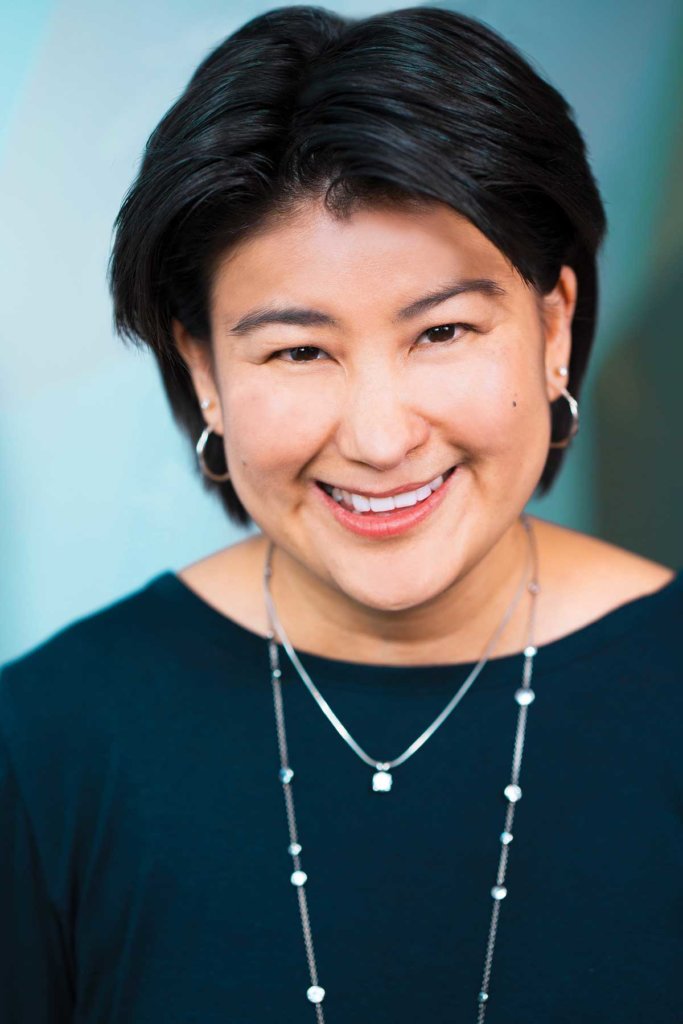
By Erin Teruya ’93 Kinney
In 1988, when Harvard University’s public health experts wanted to change social norms around drinking and driving, they didn’t go to lawmakers for help. Instead, they turned to Hollywood. “Do you know what a designated driver is?” asks Michelle K. Sugihara ’94 from her office in Los Angeles. “Because in the early 1980s if I had asked you that question, you might not have known it. It’s a concept that was imported from Scandinavia.”
As part of a multipronged national initiative to reduce alcohol-related traffic injuries and fatalities, scriptwriters agreed to embed drunken driving prevention messages into storylines of the most popular American TV shows of that time – including Cheers, Dallas and L.A. Law. In fact, more than 160 programs over the course of four years included references to designated drivers. “And week after week of that kind of repetition and people watching, it had this drastic effect on deaths caused by drunk driving,” says Sugihara.
That power of the media to change minds and influence behavior is what Sugihara is hoping to harness as executive director of CAPE (Coalition of Asian Pacifics in Entertainment), where she has been at the helm since 2015. Her organization amplifies Asian American and Pacific Islander (AAPI) voices and creates opportunities for representation by AAPI media creators and executives. CAPE also consults with and trains film studios on AAPI issues and sensitivities.
“What we watch on our screens affects how we think, feel and act,” says Sugihara, “And so it really does start with taking what we watch and using that as a tool to shift perceptions, which then in turn will shift culture.” To date, CAPE has provided script consulting on more than 150 projects – from PSAs all the way to major blockbuster films – and trained more than 1,000 studio executives about stereotypes and the history of Asian-American racism.
Her work is more pressing than ever with violence and racism against Asian Americans surging since the start of the pandemic. Hate crimes – including a 2021 shooting in Atlanta, Georgia that left six Asian women dead – are on the rise as well. “Representation on screen is one of the most urgent social justice issues of our time. And it works both ways,” explains Sugihara. “It’s people on the outside looking in and maybe learning about a culture they are not familiar with, but it’s also internal for other people who are looking at themselves being represented.”
“Representation on screen is one of the most urgent social justice issues of our time. And it works both ways. It’s people on the outside looking in and maybe learning about a culture they are not familiar with, but it’s also internal for other people who are looking at themselves being represented.”
Growing up in Hawai‘i, Sugihara says she didn’t personally encounter some of the stereotypes or racism that Asian Americans routinely experience elsewhere, calling herself “late to the diversity and inclusion party.” Her first Asian American Studies class as a freshman at Claremont McKenna College in California awakened her to some of the issues Asian Americans were facing outside of Hawai‘i. She has been championing Asian American representation ever since. Sugihara was one of a handful of students who helped establish an Asian American Studies department and major at the five Claremont colleges. The opportunity came full circle for Sugihara when, years later, she returned to her university to teach as an adjunct professor in the department she helped create.
“I was a 13-plus student at Punahou, and we were always encouraged to step up, to lead, but also to be a good follower as well, just a really good citizen of the world. And also to give back to the community at large. I really do credit the years at Punahou for molding and shaping me from the very beginning to who I am today.”
With CAPE, Sugihara is laser-focused on securing seats at writers’ tables and in C-suites for AAPI writers and executives to ensure Asian American and Pacific Islander stories are being told authentically and that AAPI directors and producers are being hired. CAPE celebrates and promotes the projects that are made by tuning in to streaming services and buying tickets on opening weekends.
“We’re a small, but mighty, team and it’s really about how we identify and push on the pain points in the industry that we can make the most impact,” Sugihara says.
Kelsey Kamanani Conklin ’08
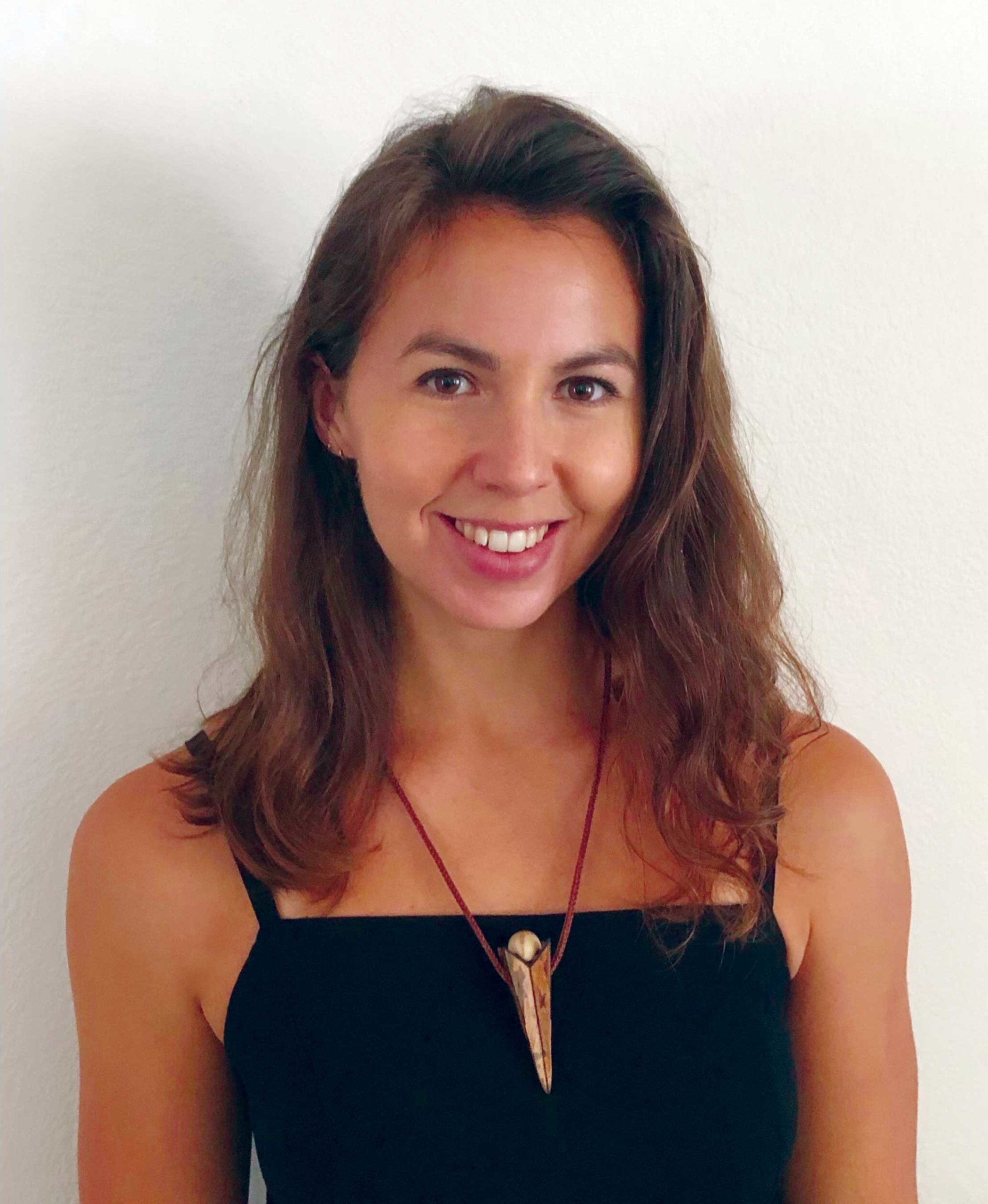
Strengthening Nutritional Equity
By Ginia Loo ’92
If we get food right, we get everything right – that is the mantra that inspires Kelsey Kamanani Conklin ’08 to tackle nutritional inequity through her work at Transforming Hawai‘i’s Food Systems Together, an initiative striving to buttress sustainable food systems and public health statewide.
“There are way too many people who lack access to culturally appropriate, health-promoting foods and ways to gather, grow, or catch these foods,” says Conklin, who is a sustainable food systems consultant and is pursuing a master’s degree in public health at the University of California, Berkeley.
Indeed, nearly 50% of households with children in Hawai‘i report experiencing food insecurity, which is defined as not having sufficient food for a healthy and active life. With this in mind, Transforming Hawai‘i’s Food Systems Together is collaboratively drafting a framework of recommendations to influence legislation, policy and industry practices. The endgame is to shape a food system that’s more resilient, equitable and less dependent on imported food.
Conklin believes this level of transformation would create a positive domino effect for the state – expanding consumer, commercial, and institutional purchasing of local foods which would create meaningful jobs and ultimately give rise to a sustainable, circular economy that is informed by Hawaiian values and worldviews. It can also be a key strategy for addressing the environmental factors that lead to health disparities for Native Hawaiians and Pacific Islanders, a key area of Conklin’s research and studies.
“When you start digging, you realize that it goes deeper than making sure a community has access to a supermarket.”
Conklin began her career in education, inspired by stories from her grandmother’s work as a teacher and a deep appreciation of her years at Punahou. Over the 10 years she spent working in this field, Conklin discovered food security and health were major barriers keeping kids from being the best learners they could be, and that’s what first drew her to issues of food and equity.
She concedes that changing the course of Hawai‘i’s large food apparatus will take significant effort – but it is not without precedent. Food has historically been a critical domain for political organizing, with food workers from factories to farms leading efforts that built working-class political power.
“When you start digging, you realize that it goes deeper than making sure a community has access to a supermarket – you have to consider how food actually comes to be. Who gets to decide what food is grown and where and with what resources? What are the laws and ordinances that regulate how food gets processed and sold, and how and to whom it’s marketed and distributed? Now we’re talking about land rights, water rights, zoning, economic incentives, public and private investments. We quickly see that these underlying systems need transformation,” she says.
When approaching a project of such magnitude, Conklin draws on the ideas and values she grew up with in Hawai‘i. “From a very young age I was taught to kilo, to examine and observe first,” Conklin says. “You know, keep my mouth shut until I had done that observation, make sense of it before speaking up and taking action. That’s especially important when working with many stakeholders across a complex political landscape.”
Another concept that guides her is mo‘okū‘auhau, or genealogy. “Understanding how a thing came to be, the history of the place and the people and what came before that makes things the way they are now,” she notes. “I look to the example of my mother, grandmother and great grandfather who were very involved in politics in their day. And I think of how they were able to take on issues they believed in, build up support, and persuade others to get involved and make a difference. That’s what leaves me feeling optimistic: That a common desire for ‘good food’ can unite otherwise siloed or disparate interests and approaches.”
Ayda Aukahi Austin ’93 Seabury
By Brandi Uyemura
Tackling Disparities in Health Care
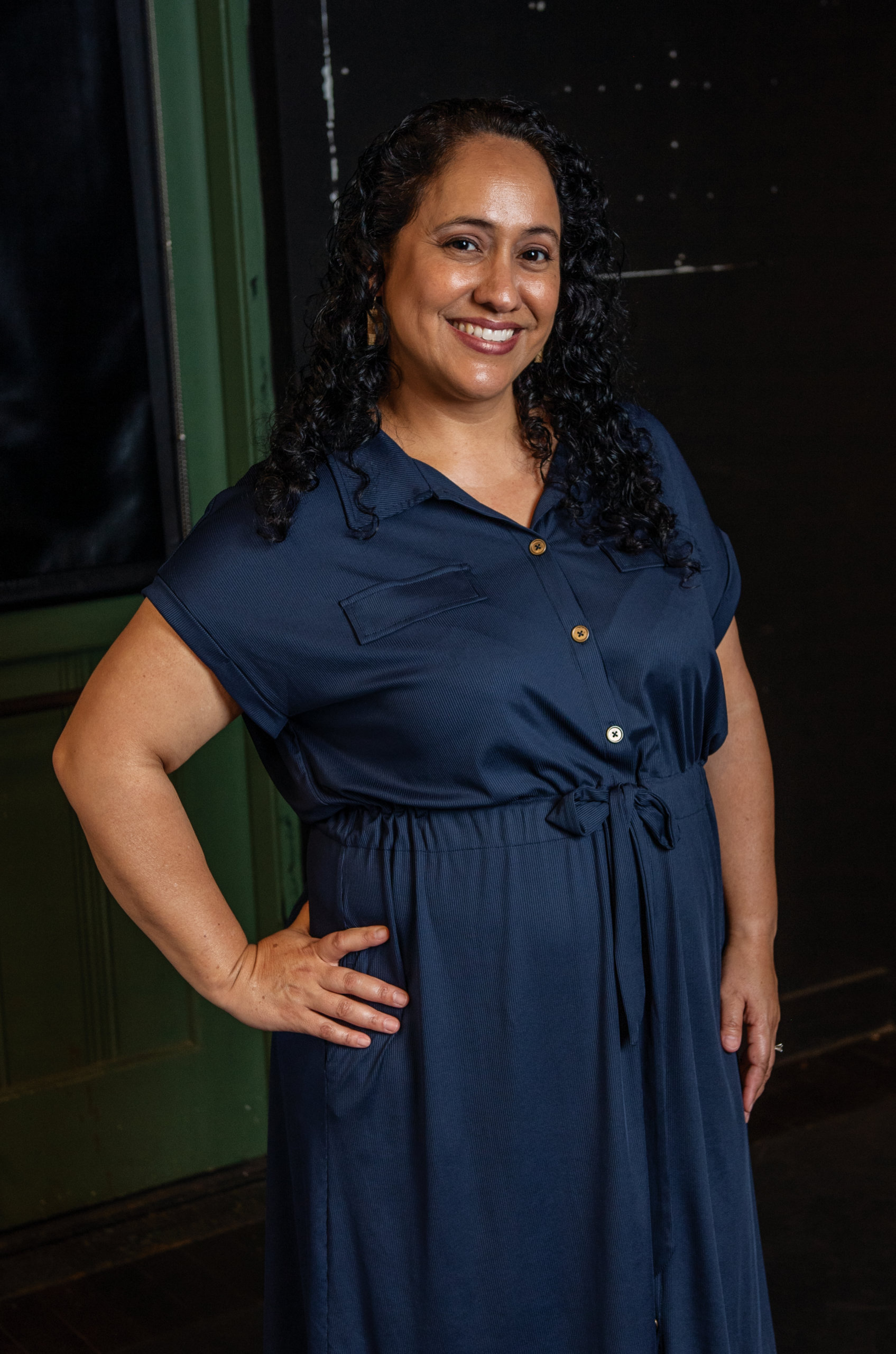
When Ayda Aukahi Austin ’93 Seabury witnessed the alarming disparity in access to medical care afflicting Native Hawaiian and rural communities, she knew something had to change. She first encountered the discrepancies after completing her Ph.D. in psychology at the University of Hawai‘i, Mānoa. “During my training, I saw a vast gap in health services, specifically mental and behavioral services,” says the licensed psychologist.
In response, she joined with a group of psychologists to create I Ola Lāhui in 2007, a nonprofit with a mission to provide culturally-minded, evidence-based behavioral health care to underserved communities throughout the state.
It has been a labor of love for the executive director, who has spent the last 15 years weaving a wide network of collaborative partnerships with local health providers and strategizing ways to tackle this issue head on.
“In the rural community, you need to meet the need that’s there – whatever walks through the door.”
One of the most potent mechanisms in bolstering access to medical care has been for I Ola Lāhui to develop psychologists-in-training. The recruits are given training in culturally-minded approaches and explore the unique barriers – including limited economic resources and severe health disparities – to providing medical care in rural settings. The goal is to give them the tools to then be stationed, and ultimately thrive, in underserved communities. The program develops the skills to address mental and physical health concerns in patients of all ages because she says, “in the rural community, you need to meet the need that’s there – whatever walks through the door.” The shortage of health professionals in Hawai‘i’s rural and Native Hawaiian communities has been a daunting problem for some time – the pandemic further aggravated the situation.
The organization delivers a program that treats the patient holistically. This can help ease new patients, who come in to treat a physical illness, to work on psychological issues as well.
It’s an alternative to traditional modes of health where patients seek treatment when they are already sick. I Ola Lāhui provides traditional therapy for depression and anxiety, but also weight management, smoking cessation, diabetes and support to manage other chronic illnesses.
Knowing that she is limited by what she can do individually, Austin Seabury is building partnerships through cross-sector collaboration. In this way, she is addressing deeper issues through advocacy and policy making with Nā Limahana o Lonopūhā Native Hawaiian Health Consortium. Her work includes consulting and training doctors, nurses, educators and administrators on resiliency and mental well-being based on Hawaiian culture and psychology training. “It’s how we understand health and our balance between the land, the spirit and the person and the ways those things affect and are different from the Western model of health,” she says.
One of her greatest joys is seeing how their early I Ola Lāhui graduates are making waves, serving the communities they were placed in and changing the lives of patients they touch. It’s a self-perpetuating model offering support and an alternative to the traditional medical system.
This year they are working with nonprofit Papa Ola Lōkahi and partnering with farms to provide poi to pregnant women. It’s one way they are reaching and connecting with individuals that may not otherwise have accessibility to obtain behavioral services and support.
It’s something Austin Seabury dreamed of doing as a Punahou student – integrating her skills and experience in a way that has a paramount impact on her community. In one example, a Native Hawaiian man she worked with through I Ola Lāhui was depressed and suicidal. She reached him through their shared culture. Learning he was an ocean person, she suggested that he swim daily to reconnect with the water. It was a simple shift, but she says his whole demeanor changed.
“We leaned into the natural environment and elements in the world. It was the power of one moment,” she says.
Austen Kinney ’25

Procuring Menstrual Equity
By Noelle Fujii-Oride
At an age when many teenage girls are trying to find their voice, Austen Kinney ’25 has already proven to be a vociferous advocate, championing for menstrual equity across Hawai‘i. Her journey began as a ninth grader during the pandemic, when she was moved by a homeless woman asking for food and assistance outside Zippy’s in Kāne‘ohe.
“I felt like there had to be something I could do to help her,” she says. “I was thinking of ways I could make a real impact, and after doing some research, I came across period poverty and realized how big an issue it is.”
Kinney, who is now a sophomore, has made big strides since that time. She has formed Hanawai Sisterhood, a group of teens working to end period poverty; served as a youth advocate for SB2821, requiring the State Department of Education to provide free menstrual products on all public school campuses; and coordinated the distribution of thousands of menstrual products throughout Hawai‘i. “Every female student or any student who has a period should be able to access these products on their campuses,” she says.
Period poverty is defined by the nonprofit Ma‘i Movement Hawai‘i as the inability to access period products and menstruation education due to financial constraints. Nearly one in four locals have made sacrifices or gone with less to afford period products, according to a November 2021 report by the State Commission on the Status of Women and Ma‘i Movement Hawai‘i. The report is based on a survey of 361 locals about their experiences with menstruation. About 42% of respondents said they had to miss class or leave school early because they did not have period products.
Kinney is committed to making a difference throughout the state, having donated more than 9,000 menstrual products to Kalākaua Middle School, Dole Middle School, Kaimukī Middle School and homeless shelters.
“Ever since I started the Hanawai Sisterhood, my motto was building a sisterhood and teens helping teens.”
She is also making a difference at Punahou. She hosted a menstrual product drive through the Luke Center for Public Service with Director Dani Goddard. Kinney collected 8,239 pads and tampons over 20 days in November and December 2021 – enough to supply 34 menstruators for a year. About 1,700 of those products went to Kalākaua Middle School’s first period pantry.
She also created mini period pantries in six Academy bathrooms and one Junior School bathroom with the support of the School’s deans and administration. The small, pink plastic bins were each filled with eight to 10 pads and tampons. And each bin had a “We Got You” sticker to signal that students don’t have to worry if they unexpectedly get their periods.
Kinney refilled the seven period pantries every day and tracked which locations received the most use. Peers also told her they used and appreciated the pantries. That data and feedback showed her that free period products were greatly needed on campus and led Punahou to install more than 40 permanent menstrual product dispensers in Junior School and Academy restrooms this fall.
“I think a lot of people thought, ‘oh, Punahou doesn’t need this because students there should be able to afford it,’” she says. “But I think it’s more than just affordability. It’s more than period poverty, it’s menstrual equity and it’s being able to have a pad or a tampon wherever you are or whatever your situation is.”
Kinney says this is a big step forward for menstrual equity. She hopes to continue growing the Hanawai Sisterhood, reduce stigma around menstruation and help students at other schools with their own period equity efforts.
“Ever since I started the Hanawai Sisterhood, my motto was building a sisterhood and teens helping teens,” she says. “I think a goal for the future would be to get more people on board and to make it a group instead of an individual movement.”
Grace Leong ’84 Saturnia and Cathy Ching ’83
Empowering Underserved Youth
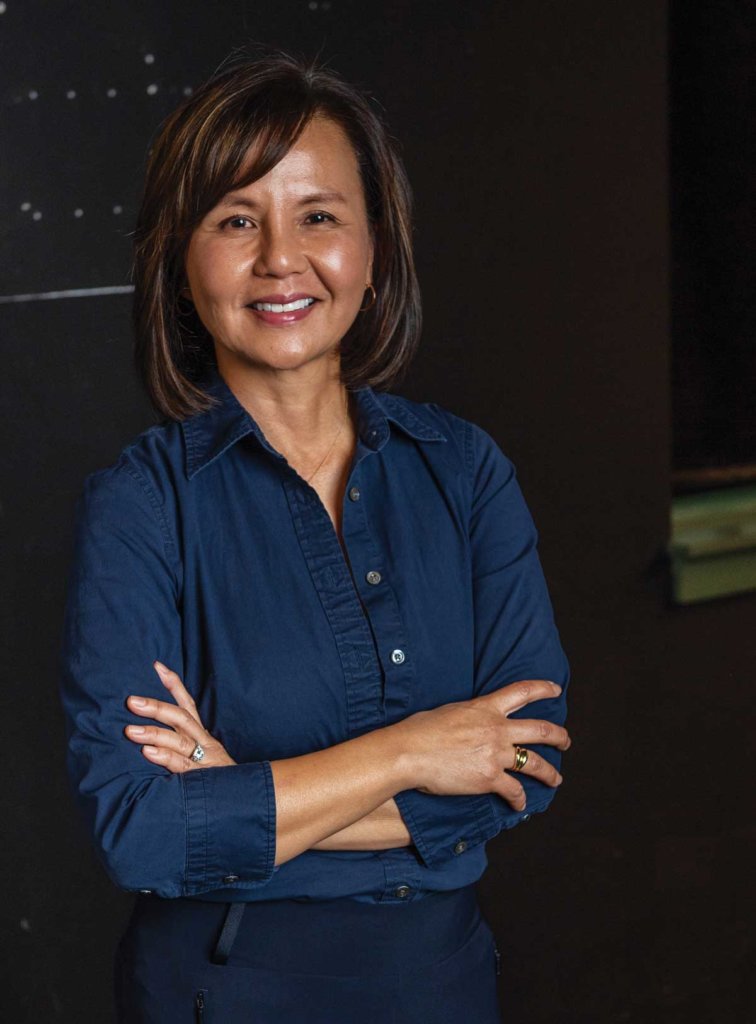
By Noelle Fujii-Oride
Longtime friends Grace Leong ’84 Saturnia and Cathy Ching ’83 only intended to talk story and reconnect when they hiked Wiliwilinui Ridge in December 2020. Instead, they decided to work together to start a mentoring nonprofit to help young adults from underserved communities fulfill aspirations of a post-secondary education.
Inspired by their own transformative experiences as mentees and mentors, the pair combined their backgrounds in business and social work to form ‘A‘ALI‘I Mentoring, named after the hardy ‘a‘ali‘i plant, which is known for thriving in unfavorable conditions.
According to a 2014 report commissioned by MENTOR: The National Mentoring Partnership, 76% of at-risk young people who had a mentor planned to enroll in and graduate from college, compared with only 56% of at-risk youth who did not have a mentor. Those with mentors were also more likely to have participated in extracurricular activities, volunteer work and other positive pursuits.
“The power of mentoring and relationships is key. After conducting research including mentee and mentor focus groups and meetings with a variety of members in the community, we believed we could make a difference and have an impact on helping young people persevere in higher education. Because the divide in our society is growing between the haves and the have-nots, it was important that we step up and do something,” says Ching, who was a private school counselor for 14 years.
The goal of ‘A‘ALI‘I Mentoring is to help young adults – ages 18 through 25 – from lower income, Native Hawaiian, Pacific Islander, first-generation college and immigrant communities attain post-secondary degrees and certifications through the support of mentoring relationships.

‘A‘ALI‘I Mentoring launched its first cohort in August 2021, matching seven mentees with individual mentor volunteers. The mentors had varied educational and career paths but shared the strong commitment of wanting to give back by helping a young person navigate college and adulthood.
Participants committed four to five hours a month for one-on-one meetings, plus group cohort activities that focused on personal finance, career exploration and readiness, and interpersonal skills.
The pilot ended in May 2022, and Ching and Saturnia, who has a business background, are already seeing promising results. Mentors and mentees continued to connect with one another over the summer. Mentees also asked to remain in the program, which led to ‘A‘ALI‘I Mentoring launching a pilot Year 2 program to continue to support the original mentee cohort.
Ching and Saturnia also saw a young woman who was dispirited and reserved when she began the program blossom into an animated and confident person. And her mentor, an emergency room doctor, helped her discover an interest in studying medicine.
“It’s all about building a one-to-one relationship, finding someone you can trust, hearing their story, learning about opportunities and broadening horizons,” Ching says.
A new cohort of 12 mentor-mentee pairs began in August 2022. Ultimately, the friends’ goals include deliberately scaling the nonprofit to ensure a quality program that meets the needs of young adults so ultimately more underserved young people persevere in higher education and build meaningful relationships.
“We want to give them the opportunity to develop their own connections with mentors who are willing to share their life experiences and perspectives, provide guidance and access to opportunities and networks,” Saturnia says. “We also want the mentees to connect with one another so they can create their own network and support each other on their life journeys.”
Candace Johnson ’70
Launching an Orbit of Diversity
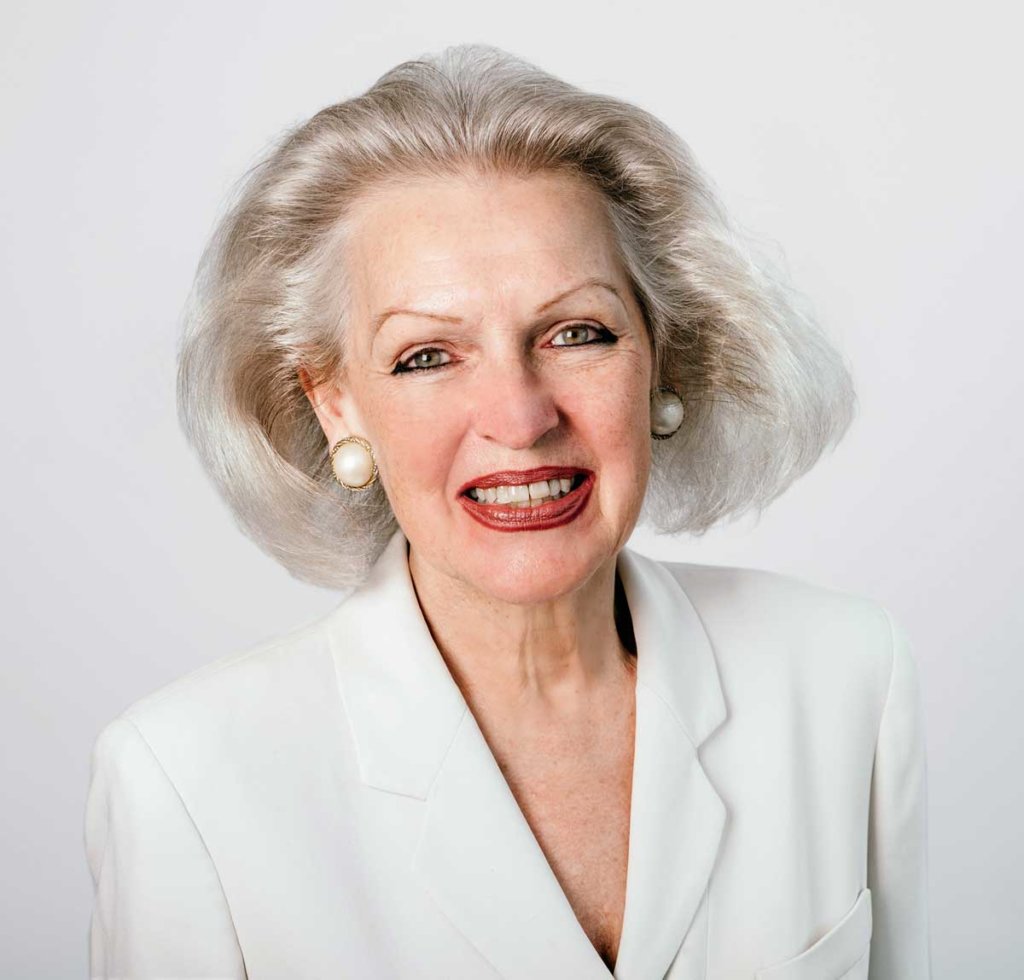
By Erin Teruya ’93 Kinney
You’ll get a kick out of this,” Candace Johnson ’70 says from her home office in southern France, as she shares her screen over Zoom. It’s a dated photo of a flocked Christmas tree decorated in ornaments. She focuses attention on a special Sputnik ornament, with Santa Claus inside, that was gifted to her by her parents. The picture is from 1957, the year that Sputnik, the first ever Earth satellite, was launched by Russia. Johnson was 5 years old at the time. “So people talk about inspiration, but really, from that day on, I believed that everything good came from space. It was truly a milestone,” she remembers.
Johnson has spent the last 40 years as a visionary and pioneer in satellite technology, space and telecommunications, including as co-founder of some of the world’s largest satellite communication companies – pillars of global telecommunications, the internet and the digital era.
She has reached atmospheric heights in an industry that is notoriously dominated by males – and helped bring other women along by championing inclusivity. Three decades ago, Johnson and a small group of female colleagues founded the Global Telecom Women’s Network, where she has been connecting and celebrating other women in the industry. From humble beginnings, the group now boasts more than 2,000 members.
Johnson’s space odyssey began with her family. Her father, Harold R. “Johnny” Johnson, worked in military telecommunications. Like many American homes in the 1960s, outer space and exploration was a frequent topic of conversation. But unlike other families, Johnson family house guests included leading experts in communications and space, such as Wernher von Braun and Vinton Cerf. Johnson, with siblings Steven ’69 and Marcia ’75, attended Punahou from 1968 – 1970, when their father, a general, was stationed in Hawai‘i as head of telecommunications for the Pacific Command.
“If I see a problem and if I think I can fix it, then I actually think I have this personal responsibility to fix it.”
As a young college graduate with a music degree, Johnson found herself working as the executive producer of a classical music station in Washington, D.C.
“I said, ‘this is ridiculous. I’m doing all of these wonderful programs and it’s just going to Washington, D.C. We should put it on satellite.’ And so we did,” recalls Johnson.
Again, as marketing director of a radio and television syndicate company that sent tapes by courier to broadcast stations around the country, Johnson proposed distributing the programs via satellite using rooftop to rooftop communications. She did, and was able to use a commission from the job to launch her first satellite company, SES.
“First and foremost,” Johnson says, “I am an entrepreneur. If I see a problem and if I think I can fix it, then I actually think I have this personal responsibility to fix it. I remember being at a seminar and being asked to tell the person next to me about what drove me. And at the time, I hadn’t quite figured out it was personal responsibility, but I knew it was righting wrongs. And for me, that can encompass so many things.”
Since her radio days, Johnson has launched many satellites into space, often spearheading pivotal initiatives including SES; Teleport Europe, the first private telecommunications company in Europe; and Europe Online, the world’s first internet-based online service and broadband satellite network. Early on, Johnson was the lone female in a male-dominated field. “It is true that it never really occurred to me that I was the only woman.
“But in 1992, all of a sudden, there were five women in executive positions, and I thought, ‘Wow, this is so cool.’ That’s when the Global Telecom Women’s Network came to fruition. “It is just the most incredible brain trust. We celebrate positive things.”
Today, Johnson is a venture capitalist and chair of the world’s largest space technology venture fund, Seraphim Space, where she invests in, mentors and inspires young space entrepreneurs, including many young women.
“It’s nice to know that I have a full battery that I can give to these young people. They don’t have to reinvent the wheel. It is also a responsibility, because these are the people who are going to make those next things happen.”
Elisia Flores ’02
Paying it Forward: The American Dream
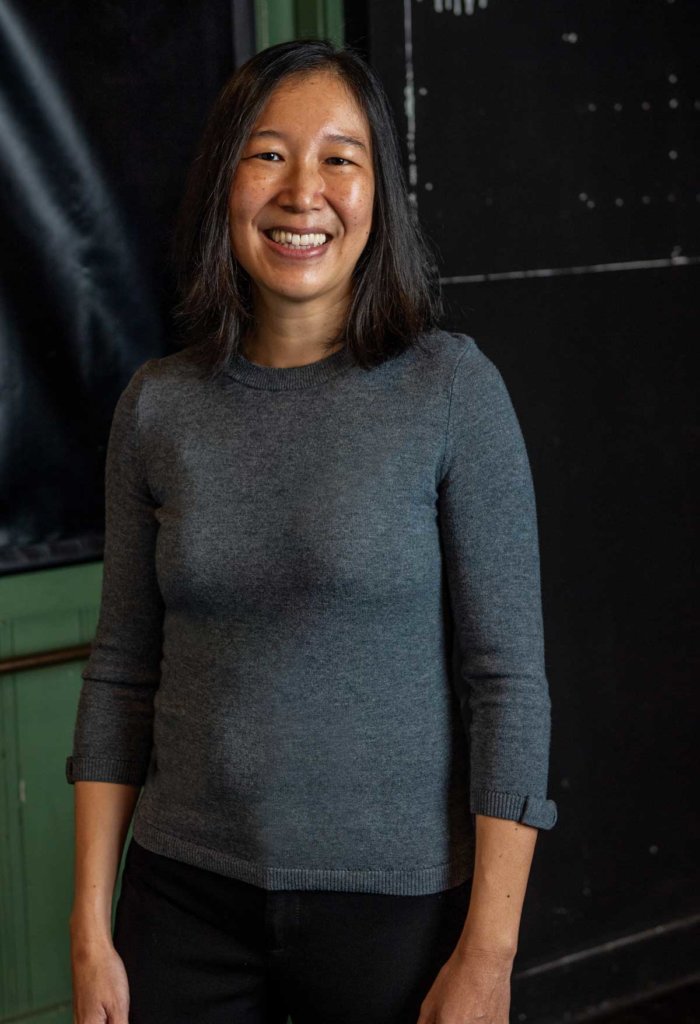
By Gina Gelber
Elisia Flores knows a classic rags-to-riches story when she sees one. The L&L Hawaiian Barbecue CEO has witnessed it through the lens of her father, Eddie Flores Jr., who grew up as one of seven kids living in a cramped two-bedroom apartment in Hong Kong and came to the United States with nothing to his name. Through hard work and enterprising instincts, Flores Jr. – along with business partner, Johnson Kam – started a humble walk-up restaurant on Liliha Street in 1976. That’s when his reversal of fortune began.
Fast forward almost five decades, L&L’s empire now stretches from New York to Japan, with 215 locations and $173 million in revenue in 2021. “The most inspiring thing about immigrants is how hard they work,” Flores says. “Because they often come from nothing, they pour themselves wholeheartedly into everything that they do. And by working hard, they can – and often do – accomplish a lot.”
Flores says L&L’s business model is organically aligned to help underrepresented communities, partly because it was founded by two immigrants. Today, some 95% of L&L restaurants are owned by Black, Indigenous or people of color.
“A lot of the L&L franchisees are mom and pop operators. The thought of joining a mega franchise organization that’s much more rigid, much more structured and with higher cost barriers is scary to them,” she explains. “Versus when they come to L&L, we understand where they are in life and help with everything we can. They become part of our ‘ohana, which is as important to us as our balance sheet.”
Flores is cognizant that for many of its franchise operators, the restaurant is not just a brick-and-mortar business – it is the American dream; it’s about forging a brighter future for the next generation. “Many of them come from modest means but manage to make progress despite the circumstances. Sometimes, they can send their kids to a good high school. Eventually those kids graduate and get college degrees. Futures get shaped in the process.”
Flores has walked down this path herself. After graduating from Punahou, she earned a bachelor’s degree in finance from the University of Southern California and subsequently an Executive MBA from the University of California, Los Angeles. Prior to returning to Hawai‘i in 2014 to join L&L as CFO, Flores worked at General Electric, where, through a series of strategic promotions, she became senior finance manager, stewarding a portfolio of $750 million.
Despite her lofty executive career, she never forgot her roots in the mom-and-pop restaurant business. Till this day, Flores – who officially became L&L’s CEO when her father stepped down in 2019 – makes it a point to get to know each franchisee on a personal level. She will often ask them: Why do you want to be part of L&L? “Their eyes light up and they often say: ‘I want to do this for my family. I want to set up a legacy for my children.’”
Building a Future of Inclusivity

Creating a legacy is more meaningful than ever for Flores, who along with her wife, Megan Flores, welcomed their firstborn, Harry who is now 7 months. “When I hear those sentiments, I’m like, geez, this is exactly how I got to be where I am because my parents had this idea and this dream to create a legacy for their family, and now I want to do the same for my son.”
Part of that dream is to have Harry grow up in a society where inclusivity and diversity are more robust than they are today – she speaks from personal experience. “There were so many challenges along the way in having our baby. We tried to adopt and there were more closed doors than open doors because we’re a gay couple,” she explains. “We tried the surrogacy route, and we almost had a surrogate, but her husband was not open to gay couples. There were a lot of times when doors were closed for us for no reason other than we’re two women.”
Flores contends that inclusivity won’t progress unless corporations and society take deliberate actions to make it a way of life. “Companies need to recognize that if they want to really diversify and to help those who are underrepresented, they have to actually make a plan to do it,” she says. “It has to be part of their culture and their company values. Otherwise, it won’t work.”
Education will also play a strategic role in transforming attitudes. “Punahou is a special place because – like any good school – it helps to expand young minds. It is embedded into the curriculum, and it is part of its identity,” she says. “To actively become comfortable thinking about things that make you uncomfortable is a practiced skill. And the earlier you can be comfortable talking to someone who has a different opinion than you, the better it is.”
Flores does not think everyone has to see eye to eye on everything. “Everyone is entitled to their views, but you can still have an openness and empathy towards others,” she notes.
“At the core level, we’re all the same, regardless of who you are or what country you come from. The love for our family is the same. The love for our kids is the same. You don’t have to understand it, but you need to respect it.”
Part of the openness and empathy that Flores is hopeful for translates into helping underrepresented communities – because she has witnessed the great impact it can have on people’s lives.
She often recounts the story of an L&L franchisee who was a former heart surgeon in China. When he and his family moved to the United States, he didn’t speak English and couldn’t practice medicine. “Somehow, they opened an L&L and became so successful that they now own the strip mall that their restaurant sits on. They changed the trajectory of their family. Seeing these types of stories unfold is so fulfilling and is the best part of doing what I do.”
